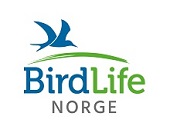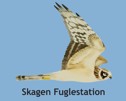
|
|
Wagtail colour ringing
By M. Wold Despite the fact that white wagtails are numerous, few controls and recoveries exist along the migration route and in the winter quarters, and little is known about its migration habits. Ringing recoveries made indicate that the species follows a South-Eastern migration route to/from important wintering areas in Marocco and the Nile delta, and the goal of the colour ringing project is to learn more about its migration and wintering areas. As a start, the plan is to ring about 3000 individuals to see if it produces new findings and new knowledge. Birds with colour rings on their legs are easy to spot in the field, and the colour rings can be read off with a telescope or binoculars, and on photos. The white wagtail has long legs and often move in open areas where observations and photos are possible to obtain at a close distance. Previous experience shows that good results are obtained when several ringers and ringing groups join in a common effort on the same species, and the white wagtail is a suitable bird for a national effort since it is common around the whole country. The first wagtails have been caught in the mist netting at Lista Bird Observatory, and the pictures show a colour-ringed individual. The colour ring should sit on the right tarsus, and a common metal ring should sit on the left tarsus. We encourage all field ornithologists and others to watch wagtails closely from now on. The rings are yellow with a three-letter code in black, and the readings can be reported via the web page http://www.ringmerking.no/cr | |||||

| Ringing numbers |
|
Sorry, but we are outside of the spring and autum seasons. Detailed log |
| Reportasje fra Lista FS i Aftenposten |

|
| Seasonal deviation | ||||||||||||||||||||||||||||||
|
|
Følg Følg Lista FS på facebook.com |
| Siste 5 på siden |
|
Festivalgjester presenterer ny fuglebok Lista Fuglefestival 2025 Looking for bird ringers for spring and/or autumn 2025 Begynnerkurs i ringmerking: 26.-27. april 2025 Report from autumn 2024 |
| Nyheter fra NOF |
|
Ny taksonomi på vingene –... Klima- og miljøministeren vil... Har du funnet en måkeunge?... Tvillingartene: Hauk over hauk Hvor mange fuglearter finnes... Statsforvalteren opphever... Storskarv i Europa i... Norge må heve stemmen for... |
Lista Fuglestasjon
Fyrveien 6
NO-4563 Borhaug
post@listafuglestasjon.no Tlf: 949 86 793
 |  |


 Only in English
Only in English



